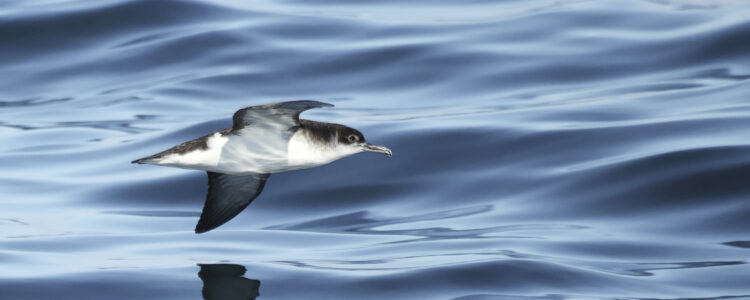
Seabirds
Adult bird > Common Conditions > Seabirds
DISEASES
‘Puffinosis’ coronavirus
Clinical signs – conjunctivitis, leg paralysis, blistered foot webbing
Diagnostics – blood sample
Treatment – doxycycline
Comments – mainly in manx shearwaters, sometimes herring and lesser black backed gull chicks
Paramyxovirus Type 1 / Newcastle disease
Clinical signs – affects respiratory, nervous, and digestive systems. Dyspnoea, nasal discharge, diarrhoea, drooping wings, sudden death
Diagnosis – bloods (ELISA)
Treatment – no know treatment, fatal
Comments – many birds die without showing clinical signs. Clinical signs in gannets. Also identified in guillemots, puffins, cormorants
Bacterial infections (Escheriachia coli, Klebsiella sppl, Salmonella typhimurium, Campylobacter spp. and Listeria spp.)
Clinical signs – lethargy, urate soiling of the vent, anorexia
Diagnostics – cloacal swab culture
Treatment – fluids and antibiotics
Comments – latter three zoonotic, can be stress induced in captivity
Bacterial infections (Mycobacterium avium)
Clinical signs – lameness due to bone infection
Diagnostics – radiography, clinical signs, prolonged culture
Treatment – fluids, antibiotics, joint lavage
Comments – common in gulls. Treatment rarely successful
Aspergillosis (fungal disease)
Clinical signs – open mouthed breathing, anorexia, dyspnoea
Diagnostics – clinical signs, radiography
Treatment – prophylactic itraconazole. Treatment once established is rarely successful
Comments – often triggered by stress of captivity, especially when debilitated. NEVER use straw or hay for bedding. Thiamine deficiency can predispose to it. Seen in pelecaniformes and charadriiformes
TRAUMA
Fishing tackle
Clinical signs – halitosis, emaciation, occasionally nylon line protruding
Diagnostics – clinical signs, radiograph
Treatment – Do not cut any protruding fishing line, may be needed for extraction
X-ray to locate hook, if no hook check for any entanglement in tongue. Gavage 20ml liquid paraffin into oesophagus and gently pull line out.
If hook found on x-ray, mark spot on length of stomach tubing, lubricate tube and feed it down over the protruding fishing line until it snags on the hook, gently push out the snagged hook then, keeping the line taught inside the tube, carefully withdraw both line and tube.
Alternatively hook can be surgically removed by entering the side of the oesophagus. Note major jugular vein. Hook can sometimes be located by strong magnet.
Comments – mainly water birds, swans, ducks, geese
Fractures
Clinical signs – broken leg, wing, beak
Diagnosis – radiography
Treatment – avian fracture repair techniques
Comments – wing/leg fractures in seabirds serious. Need to be totally fit pre release as e.g. gannet hitting water from a 35m plummet. Avian bone healing process takes approximately 3wks. Gulls heal very well and quickly
PARASITES
Proventricular worms (Contraceacum spp.)
Clinical signs – anorexia, diarrhoea, emaciation, lethargy
Diagnostics – faecal sample
Treatment –fenbendazole
Comments – infection via host – fish
Gapeworm (Syngamus trachea)
Clinical signs – open mouthed breathing, dyspnoea, respiratory noise
Diagnostics – faecal sample
Treatment –fenbendazole
Comments – infection via host – earthworm. Gulls
Ectoparasites – lice, mites
Clinical signs – visual identification of parasites
Diagnosis – clinical signs
Treatment –topical ivermectin
Comments – does not affect bird, irritating to handlers. Care with topical treatment, can affect waterproofing
OTHER
Exhaustion/Starvation
Clinical signs –underweight, sometimes loss of waterproofing, possible fracture from crash landing
Diagnosis – pelagic bird found inland. Seabird found after bad storms. Clinical signs
Treatment – prophylactic treatment for aspergillosis – itraconazole, fluids, force-feeding if necessary for weight gain, salt tablets, aquaminivit tablets, swimming practice
Comments – release when normal weight and fully waterproof. Mainly found during autumn storms
Nutritional problems
Clinical signs – ‘slipped wing’/’angel wing’ – unnatural rotation of carpal joint, beak/skeletal deformities
Diagnosis – clinical signs, blood tests
Treatment – rectify nutritional requirements – aquaminivit tablets. Sometimes irreversible
Comments – especially cormorants. Deficient in vitamin D, magnesium, calcium and sometimes excessive protein
Botulism – due to bacteria Clostridium botulinum which produces toxin
Clinical signs – flaccid paralysis of legs, excessive salivation, shallow irregular heartbeat and depressed breathing. Possibly low temp, 36.5–37.5˚C, and projectile non smelly diarrhoea
Diagnostics – history; air temp over 23˚C, low water levels
Treatment – fluids. Gavage with antitoxin (see Adult Birds Drugs & Dosages table). After 24hrs start to gavage with liquid food e.g. Poly-Aid or Complan. Continue until the bird is feeding for itself again
Comments – mainly water birds and gulls. Botulism very toxic, possibly only 50% success rate
Oiled
Clinical signs – hypothermia, loss of waterproofing, toxicity from ingesting oil coating the feathers
Diagnosis – clinical signs
Treatment – go to the Oiled Wildlife Response Network website for assistance, and get detailed veterinary advice on the Marine Wildlife Rehabilitation website
Comments – stabilise before washing
VETERINARY CONSIDERATIONS
Examination
Oral cavity – fishing tackle, mucus membrane colour
Body condition – pectoral muscle mass palpation
Plumage – ectoparasites, oil
Wings/legs – palpation for fractures
Anaesthesia
Breath-holding – diving adaptation, possible on induction, predispose to metabolic acidosis
Fasting – regurgitation common so fast overnight
Monitoring – interdigital webbing pinch, corneal reflexes
Hyperthermia – common, hypothermia possible, monitor cloacal temp throughout
Gas – isoflurane induction with adapted facemask e.g., latex glove joining bird’s head and facemask
Do not use nitrous oxide in diving birds
Prophylactic treatment
Itraconazole prophylactically for seabirds – to prevent aspergillosis
